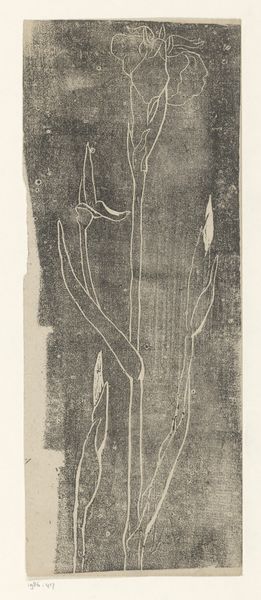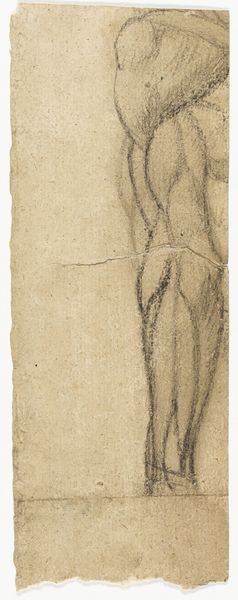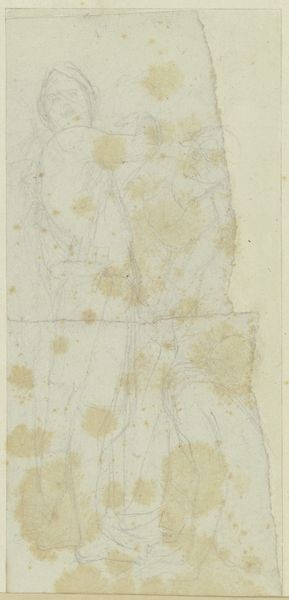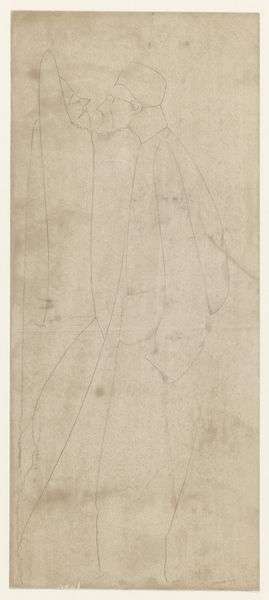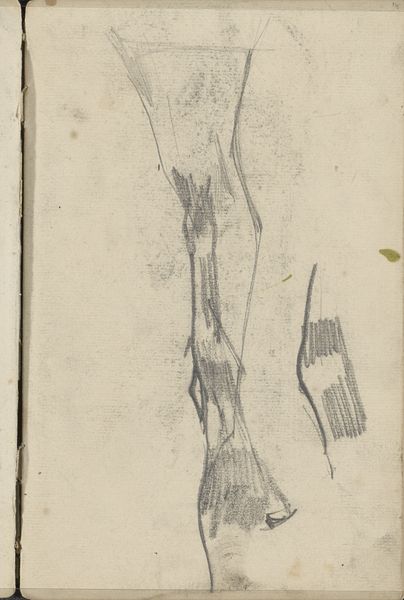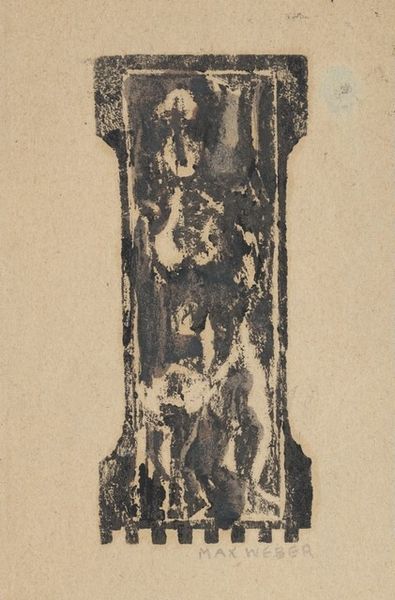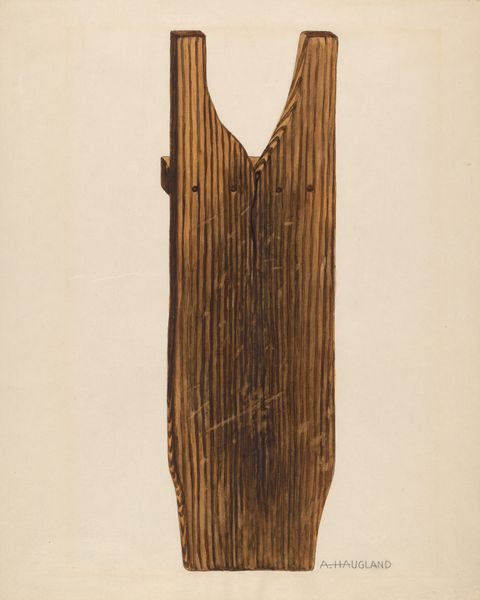
Statue of the Republic, Chicago, Illinois, Preliminary Sketch 1891
0:00
0:00
drawing, paper, sculpture, pencil, graphite, architecture
#
pencil drawn
#
drawing
#
landscape
#
figuration
#
paper
#
sculpture
#
pencil
#
graphite
#
sketchbook drawing
#
architecture
Dimensions: Appro×. 25 × 9.2 cm (9 7/8 × 3 5/8 in.)
Copyright: Public Domain
Curator: Here we have a preliminary pencil sketch from 1891 by Augustus Saint-Gaudens, titled "Statue of the Republic, Chicago, Illinois." It's currently held at the Art Institute of Chicago. What are your initial thoughts? Editor: There's a ghostly quality to it. Faint, like a half-formed memory. I immediately sense the grandeur, even in this small-scale graphite drawing on paper. It hints at something monumental. Curator: Monumental indeed. Saint-Gaudens created this sketch as a preliminary design for a colossal gilded statue erected for the World's Columbian Exposition of 1893. Think of this small drawing as a precursor to a 65-foot-tall gilded figure. Editor: Ah, the Columbian Exposition! A grand stage for American ambition. Does this sketch capture anything about the symbolic meaning the final statue would embody for Chicago? Curator: Absolutely. Notice the raised arms holding attributes. She is Columbia, an allegorical figure embodying American ideals. In one hand, she would hold a globe symbolizing progress and in the other, an eagle representing liberty. These symbols invoke a sense of optimism tied to Chicago's rise as a modern metropolis after the devastating fire of 1871. The symbolism here touches upon recovery, power, and promise. Editor: But there’s something vulnerable in the sketch. A tentative quality, like the city itself was still unsure of its path forward even in its reconstructed state. The soft graphite lines and almost ephemeral presence hints at this underlying insecurity despite its monumental intent. Did the public receive the final statue well? Curator: Initially, yes, it was immensely popular during the fair. However, it was dismantled after the exposition and eventually destroyed by a fire. The later, smaller versions act as enduring symbols of civic pride and aspiration. This earlier sketch retains something more ambiguous perhaps, precisely because of its unfinished state, opening a window into a moment of complex cultural negotiation. Editor: That's a fitting point. Even as a sketch, it becomes a relic imbued with layers of history, its fragility a reminder of the impermanence of even the grandest visions. The pencil on paper, too, mirrors the tension between ephemeral artistic idea and the monumental forms it sought to represent. Curator: Indeed. Examining preliminary works allows us a rare peek into the artistic and societal anxieties underpinning triumphant symbols of collective memory. Thanks for walking through it with me! Editor: My pleasure. It makes me want to see the modern iteration in person again.
Comments
No comments
Be the first to comment and join the conversation on the ultimate creative platform.
